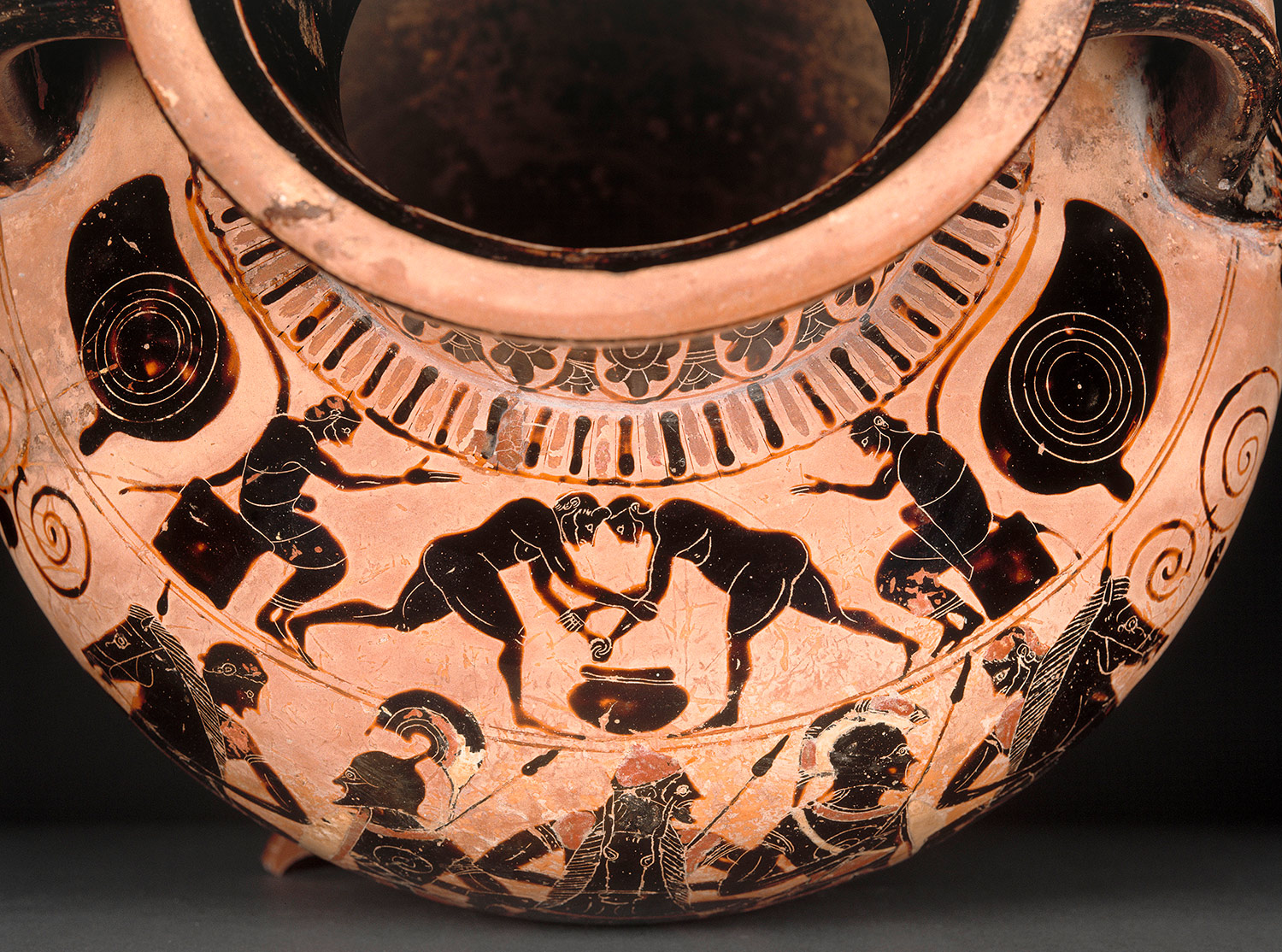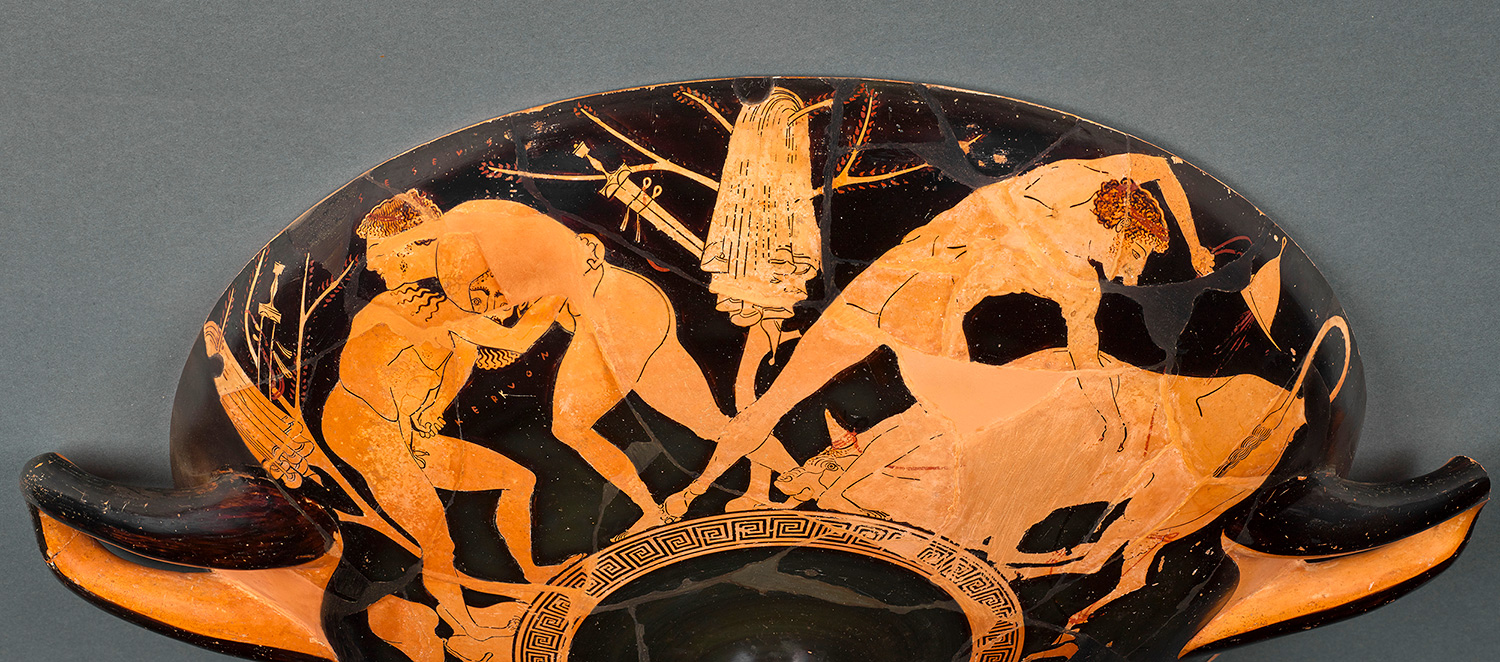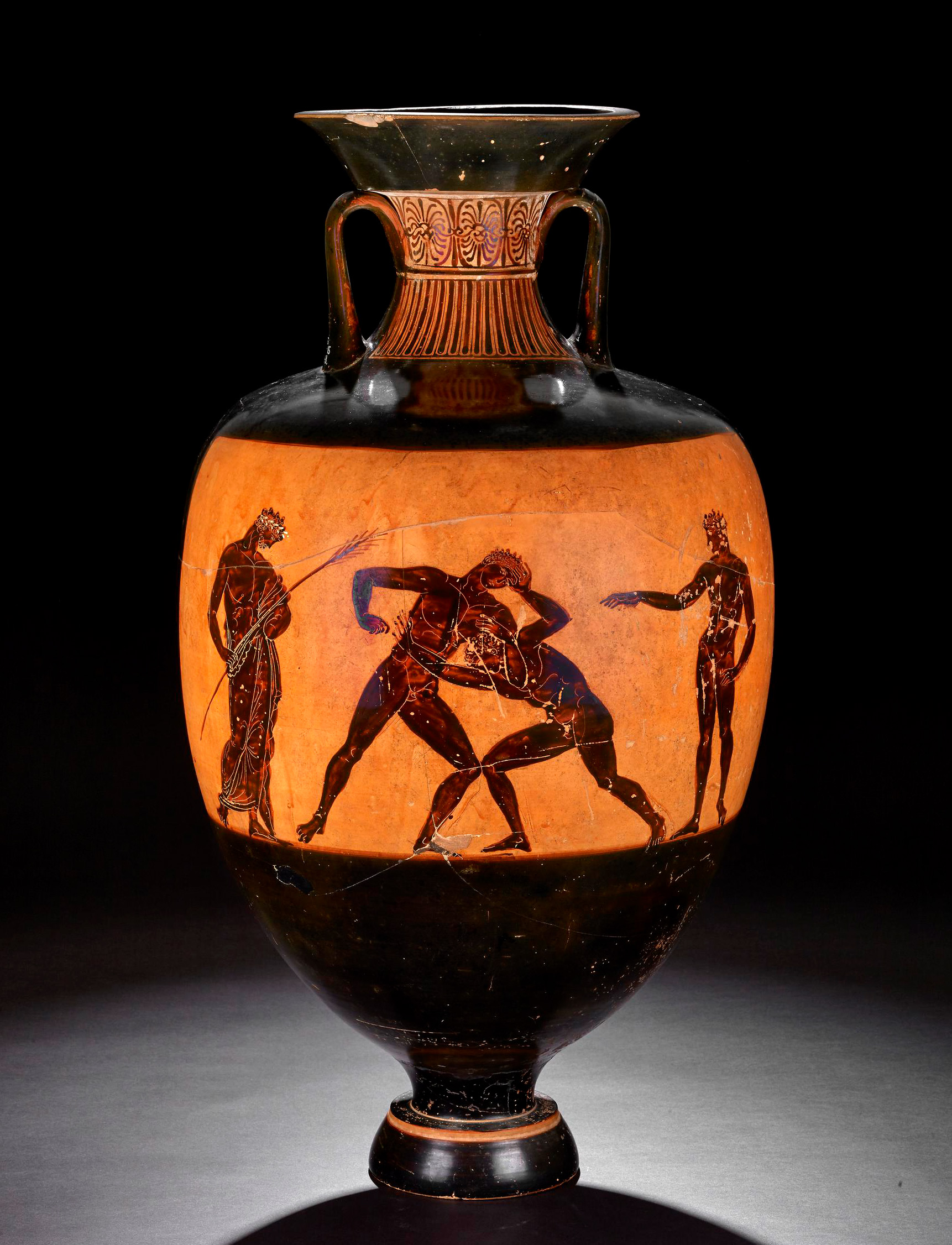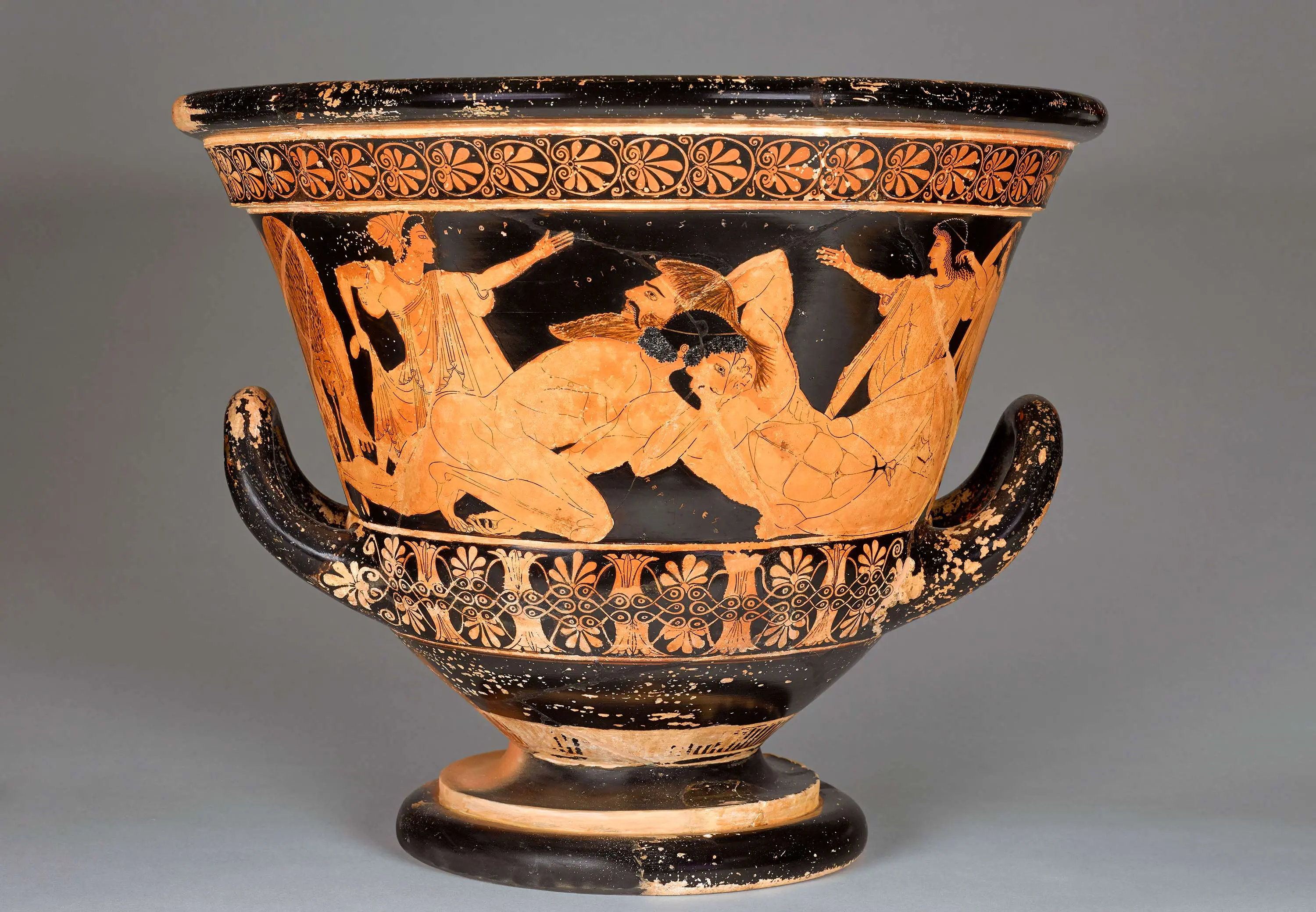
Olympism
24 April – 16 September 2024
At the Heart of a Merciless StruggleSigned ‘Euphronios, painter’
Attic red-figure calyx krater: Struggle of Herakles and Antaios
About 515–510 BC
Paris, Musée du Louvre, Department of Greek, Etruscan and Roman Antiquities, G103
This red-figure krater, painted by Euphronios, one of the masters of this technique, depicts the struggle between Herakles and the giant Antaios, son of Poseidon and Gaia. The battle was unequal, for the giant could regain his strength by touching earth and he killed any newcomer to his territory. And yet it is Herakles who triumphs here.
The Victory of Hellenism over Barbarian Violence
The Greek hero no longer needs to lift the giant to keep him from touching earth. His immense body is already still, one of his hands caught beneath the body of his adversary. Strangled by the son of Zeus and Alkmene, Antaios is in the throes of death – as shown by his rolled-back eyes and half-open mouth, revealing his teeth. But Herakles crouches, his muscles tensed and his back bowed with effort. His face remains calm and concentrated, a sign of his perfect mastery over himself.
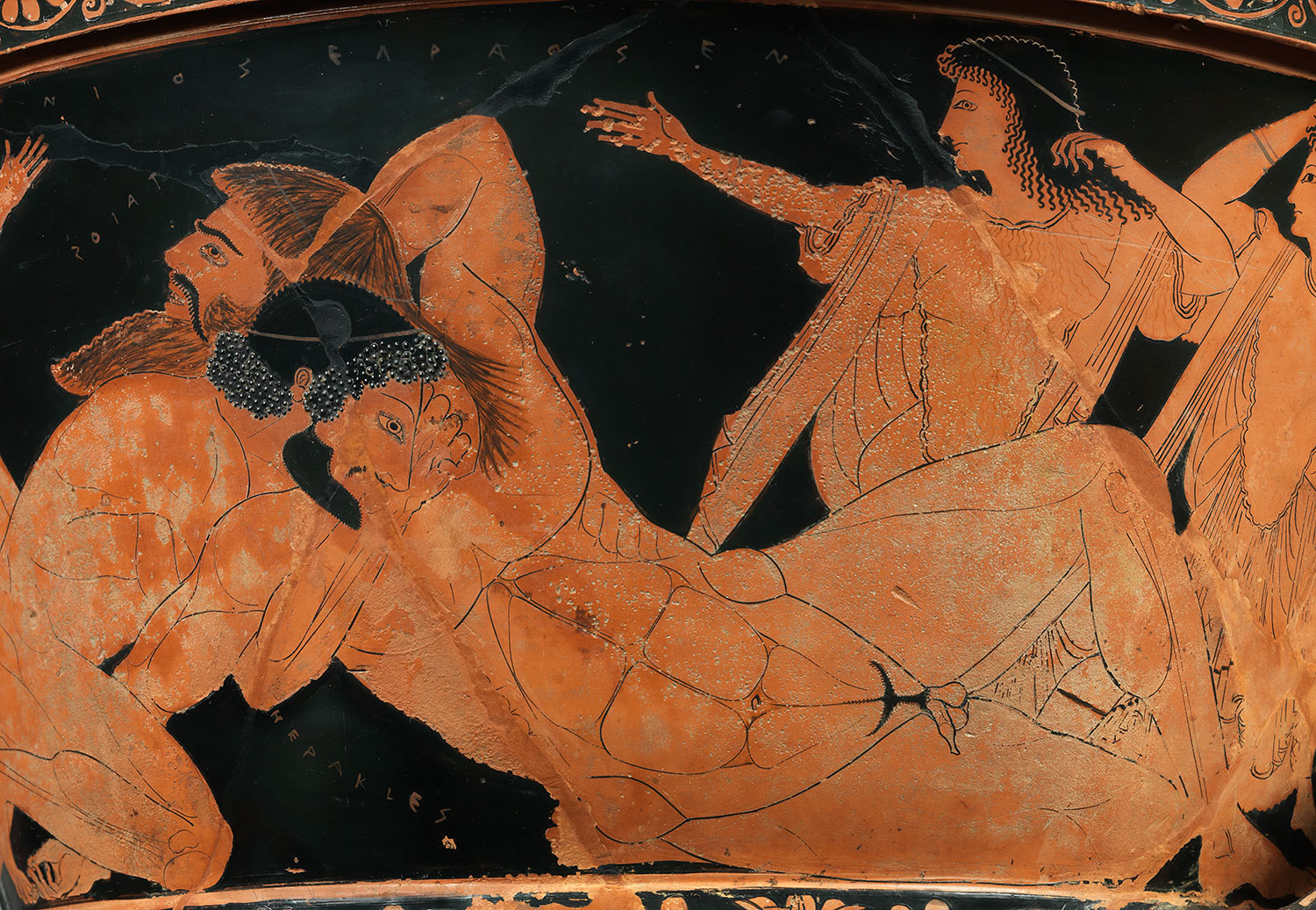
A Master of the Red-Figure Technique
The red-figure painting technique gave the artist a range of subtle hues to suit his purpose. The potassium-rich clay slip vitrified and turned black during the process of oxidation-reduction when fired: the intensity of the black was determined by the amount of slip on the painter’s brush. The ringlets of Herakles’ jet-black hair were formed by the previous application of a granulation of tiny clay balls. Antaios’s hair was rendered with sweeps of a brush sparsely loaded with slip, giving it a strange, coarse appearance. Thus the giant’s barbarism contrasts violently with the refined Hellenism of the legendary creator of the Olympic Games.

A Philatelic Selection for the First Olympic Games
This scene is among the subjects chosen to illustrate wrestling on one of the commemorative stamps issued for the 1906 Intercalated Games, known as the Mesolympics, held in Athens. These issues were intended to finance the Games while celebrating the richness of Greek culture. Due to his skill at miniaturising images, Gilliéron was selected to design the stamps, in collaboration with the numismatist and archaeologist Ioannis Svoronos, who chose the subjects. Completing the team, French engraver Louis-Eugène Mouchon was responsible for the production of the 1896 Olympics and 1906 Mesolympics issues.

Sélection d'œuvres

Signé par Euphronios, peintre, Cratère en calice attique à figures rouges : lutte d’Héraklès et Antée. Vers 515-510 avant J.-C. Paris, musée du Louvre, département des Antiquités grecques, étrusques et romaines, G103
1 sur 5
